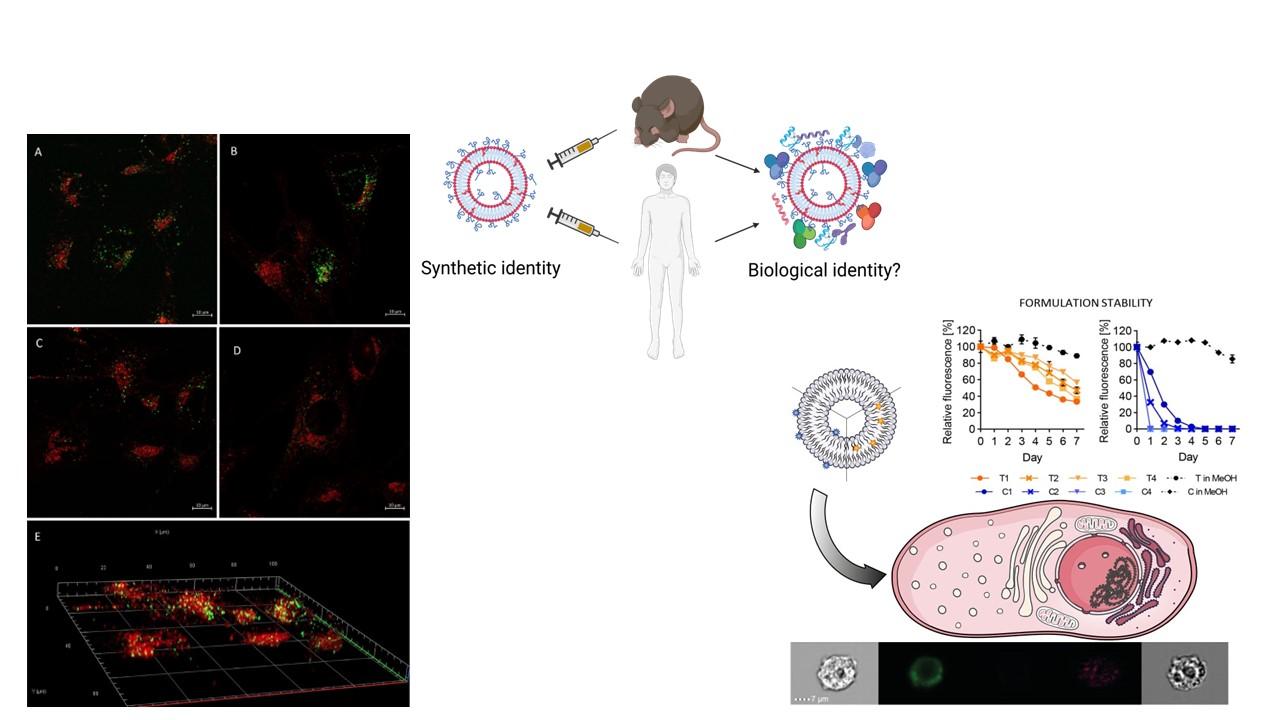Following the fate of nanocarriers for improved drug therapy
 Gaining insight on fate of nanocarriers in biological environment prior to in vivo challange
Gaining insight on fate of nanocarriers in biological environment prior to in vivo challangeTo tackle the limitations of current nanomedicine in translational patway, we aim to gain a deeper insight on the essential interaction between nanocarriers and biological environment as the first step in optimization of final formulation for intravenous administration. By convincingly predicting the nanoparticle fate already at in vitro stage of formulation development, we expected that the disappointment of suboptimal in vivo outcome could be avoided, allowing better translation from laboratory to clinic. To achieve this goal we aim to follow the fate of nanocarriers in simulated biological environment applying state-of-the-art methodologies that permit close follow up of nanocarriers, their interactions with cells, stability in biological environment leading to final in vivo proof-of-concept.
To address the challanges, we organize our work in several sub-projects that are interconnected yet deep in the specific challanges of stability of nanocarriers, chnages in their properties onces in contact with biological reality, approaches to be utilized in drug targeting and final in vivo challnge. The following sub-projects are core part of main aim:
a) Microscopy meets nanomedicine: The imaging techniques to localize and characterize nanocarriers (PI Skalko-Basnet)
The work is possible because of strong collaborating network
Members:
Financial/grant information:
European Union’s Horizon 2020 Research and innovation programme under the Marie Skłodowska-Curie grant agreement No. 766181. DeLiver Innovative Training Network (2018-2022) (partner)
Strategic UiT multidisciplinary funding (2019-)
Tromsø Forskningsstiftelse (19_PET-NUKL)/180°N/Norwegian-Nuclear-Medicine-Consortium (2020-2025)